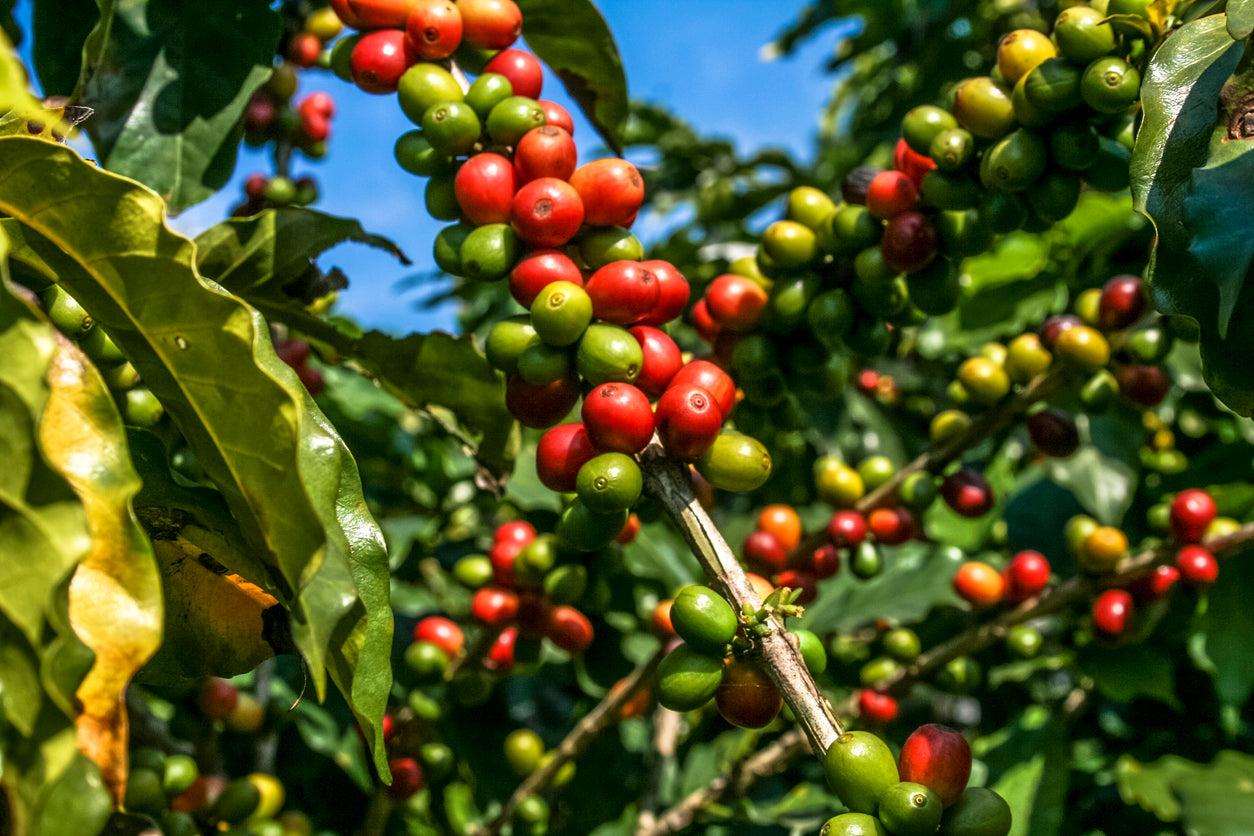-
All Products
-
Gift Voucher
-
Latest Offers
-
R&J Club
-
Brewer's Blog
-
Sponsorship
-
Browsing History
You have no recently viewed items.

The Journey of a Coffee Bean: From Farm to Cup
Coffee, the beloved beverage that has captivated the world, is much more than a simple morning pick-me-up; it is an intricate journey from farm to cup. Explore the fascinating process that transforms coffee cherries into the aromatic and flavourful beans we savour daily. From the cultivation of coffee plants to the intricate roasting process and the art of brewing, each step in the coffee journey contributes to the unique and delightful coffee experience we all cherish. Don't forget to put the kettle on.
The Origins of Coffee
Legend has it that a goat herder named Kaldi originally discovered the recharging properties of coffee in the ancient coffee forests of Ethiopia after observing his goats' heightened energy after consuming coffee cherries. Eventually, word of coffee's energising qualities reached the Arabian Peninsula, where coffee cultivation and trading started in the fifteenth century.
The earliest coffeehouses, known as qahveh khaneh, were established in Arabia in the years that followed, as coffee grew to be an essential component of Arabian society. These lively places immediately became hubs for social gatherings and intellectual exchange throughout the Middle East.
Cultivating Coffee Plants
The "coffee belt," which covers the equatorial parts of the world, is the prime zone where the precise conditions are found for coffee growing. Brazil, Colombia, Ethiopia, Vietnam, and Indonesia are among the nations that make up the belt. The two main coffee species cultivated commercially are Arabica and Robusta. Arabica, which is highly sought-after for its delicate flavour and aroma, thrives in cooler climates at higher altitudes. On the other hand, Robusta is tougher and thrives at lower altitudes, making it more resistant to pests and illnesses.
From the planting of coffee seedlings to the management of mature trees, cultivating coffee requires meticulous attention. The coffee plants bloom with sweet-smelling white blossoms that eventually turn into coffee cherries with the desired coffee beans.
Harvesting and Processing Coffee Cherries
Different harvesting methods can greatly influence the quality of the coffee. Coffee cherries need to be harvested many times, either by handpicking or strip-picking, because they ripen at different rates. Only the ripest cherries can be chosen through handpicking, resulting in better coffee.
The coffee cherries are processed to remove the beans after being harvested. The dry method and the wet method are the two main processing techniques. The cherries are sun-dried using the dry method, either spread out on patios or raised beds. The flavour profile produced by this technique makes it popular for speciality coffees. In comparison, the wet process involves washing and fermentation to separate the beans from the cherry pulp. Although it requires more resources, this approach gives you more control over the final cup's flavour.
Coffee Beans: From Green to Roasted
When the coffee beans are extracted, they are still green, unroasted, and lack the distinctive coffee flavour and aroma. The magic happens during roasting, when the beans change into the recognisable brown coffee beans. The ultimate flavour profile of the coffee is influenced by variables including temperature, time, and airflow during the art of roasting, thus requiring both knowledge and accuracy.
As a result of a series of chemical reactions brought on by roasting, aromatic oils are produced and unique flavours are developed. Dark roast coffee beans have a rich and robust flavour, whereas light roast coffee beans have a more delicate flavour that highlights the beans' distinctive origin characteristics.
Brewing the Perfect Cup of Coffee
Coffee enthusiasts can express their personal tastes and creativity during the final stage of the process, brewing. Different brewing techniques exist, and each produces different outcomes. Each method brings out different tastes and intensities, and varying grind size, water temperature, and brewing time significantly influence the taste of the finished cup. Popular methods include French press, pour-over, and espresso. To find the perfect cup of coffee for you, experiment with various brewing techniques.
Final Thoughts
Coffee beans travel a fascinating story of discovery, cultivation, and transformation from farm to cup. Coffee continues to attract and unite people across countries and cultures, from the ancient coffee woods of Ethiopia to the global coffee culture we love today. Coffee's extensive cultivation, processing, roasting, and brewing processes result in a sensory experience unlike any other.
Understanding the journey of a coffee bean allows us to appreciate the dedication and craftsmanship involved in bringing this extraordinary beverage to our cups. Cheers to the remarkable journey of the humble coffee bean!
- Choosing a selection results in a full page refresh.
